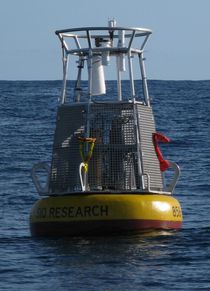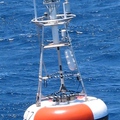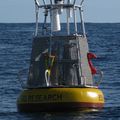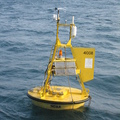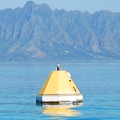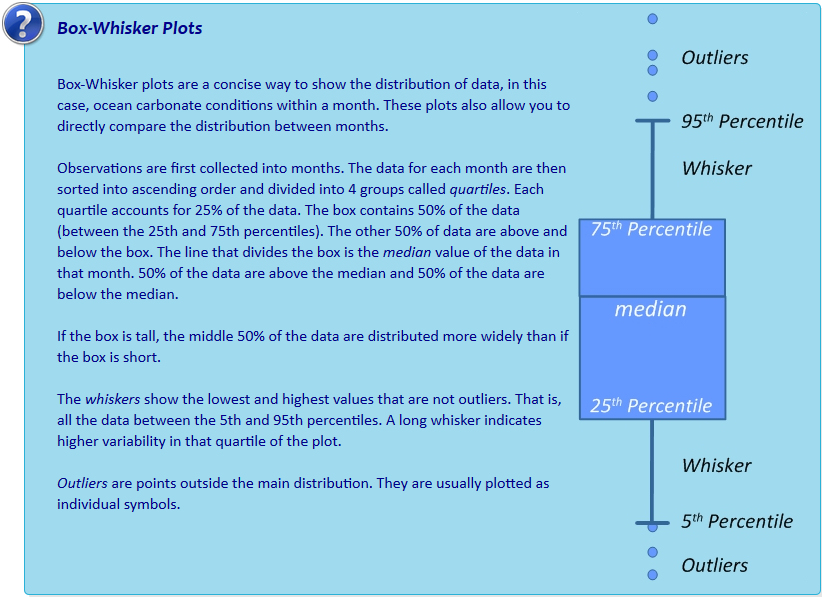CCE 1
California Current Ecosystem 1 (CCE1) Mooring at 33.5°N, 122.5°W.
A MAPCO2TM system was deployed on a California Current Ecosystem Interdisciplinary Biogeochemical Mooring on November 11, 2008. This mooring is part of a multi-investigator, multi-disciplinary project with two surface moorings in the California Current (the other is CCE2) with a sensor suite covering biological, chemical, and physical oceanography as well as meteorology. The objectives are to resolve event-scale ocean phenomena and to understand linkages between changes in the physical-chemical environment and the responses of ocean biota. This project is closely coordinated with other projects off of Southern California such as CalCOFI, LTER, and CORC.
CCE-1 is located 250 km southwest of Pt. Conception California in the low salinity core flow of the California Current. The California Current is a broad southeastward surface flow that parallels the coastline a few hundred miles offshore. For more information about the buoy and other sensors, please visit UCSD's California Current Ecosystem Data Page. This work is supported by NOAA's Ocean Observing and Monitoring Program and Ocean Acidification Program.
On September 21, 2012, a surface seawater pH sensor was added to the CCE1 mooring. By measuring pH in addition to pCO2, we are able to more accurately and precisely study the changes associated with ocean acidification. All seawater pH observations are shown in the second figure below.
Finalized Data: National Centers for Environmental Information NCEI.
Plots of surface water and atmospheric CO2 and surface water pH (click+drag to zoom):
Monthly climatology of surface seawater aragonite saturation state (Ω) and pH:
Interactive box plots below are observations binned by month as described in Sutton et al., 2016. Pie charts represent % of observations within each month that fall below the adjustable line. This adjustable line is meant to provide a tool for assessing potential biological thresholds. For example, setting the line to Ωaragonite of ~2.0 would assess monthly exposure of Pacific oyster larvae to sub-lethal chronic effects in regions where these larvae occur naturally or in hatcheries (see studies here and here).

